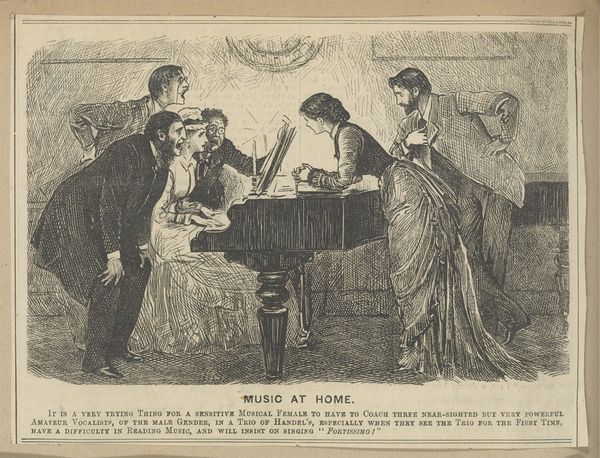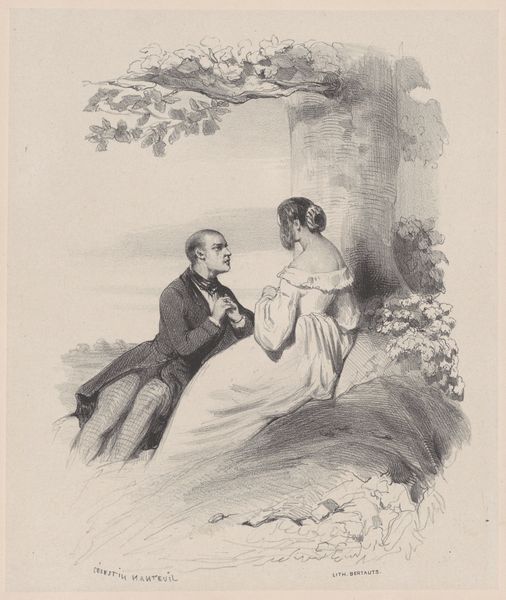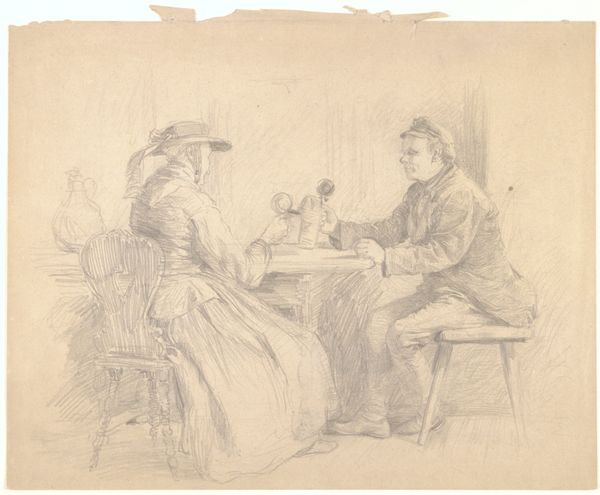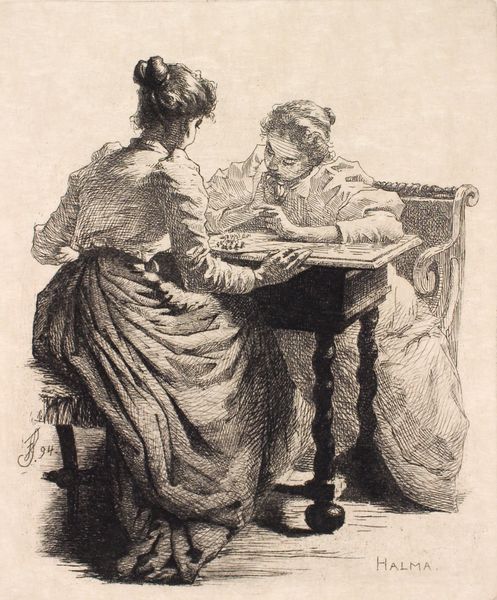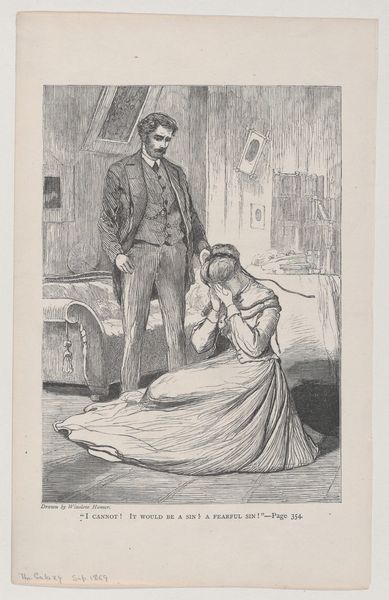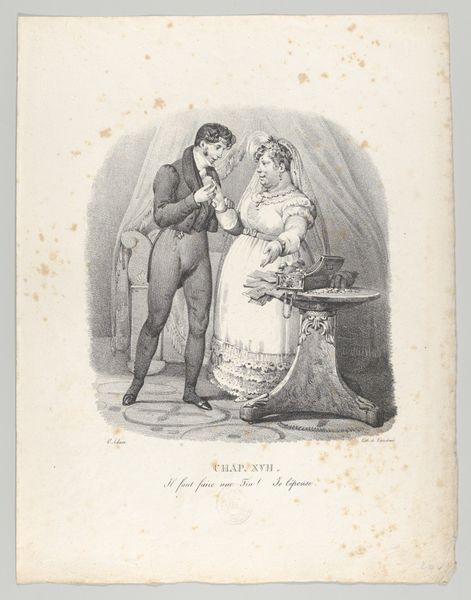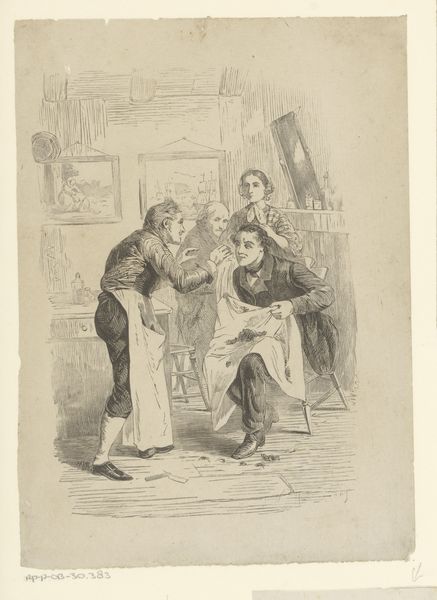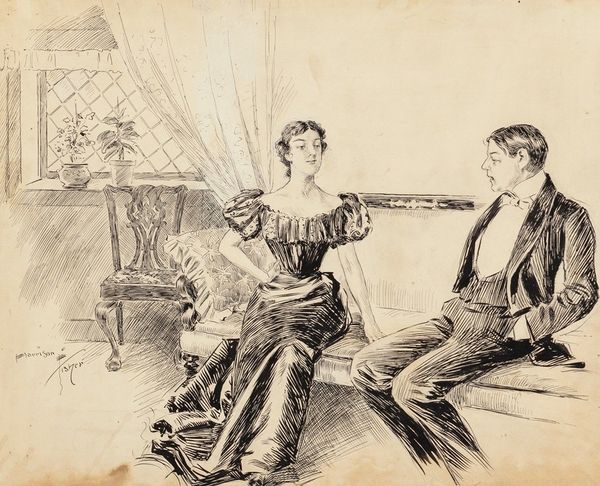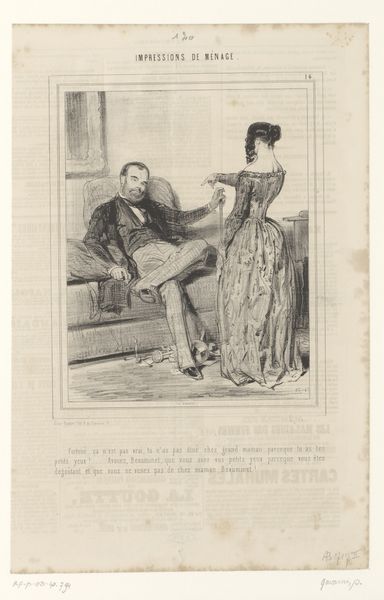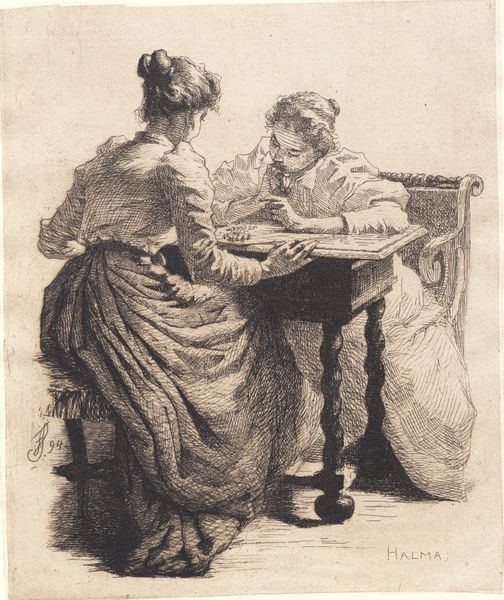
drawing, print, ink, ink-drawings, graphite, pen
#
pencil drawn
#
architectural sketch
#
drawing
#
amateur sketch
#
toned paper
# print
#
pencil sketch
#
charcoal drawing
#
ink
#
pencil drawing
#
ink-drawings
#
france
#
water
#
graphite
#
pen
#
watercolour illustration
#
pencil art
#
watercolor
Dimensions: 254 × 356 mm
Copyright: Public Domain
Curator: This is George du Maurier’s "Groves of Blarney," created in 1893, employing pen, ink, and graphite on toned paper. What's your first impression? Editor: It's melancholic. The lean of the man against the piano and the woman's straight-backed posture, combined with the stark monochromatic rendering, suggests a quiet desperation. What do you make of its physical construction? Curator: I see this as a keen commentary on the evolving dynamics of leisure and labor in the late 19th century. Consider the choice of materials. Ink and graphite, easily mass-produced for printing, allowed du Maurier to circulate his social observations widely through publications like "Punch" magazine. The artwork’s existence depended on new paper-making and printing technologies of the time. Editor: Absolutely, it reflects broader social access, but I think it's impossible to ignore the figures' poses and clothing. The man’s leaning posture implies boredom, his gaze detached. Conversely, the woman at the piano represents Victorian ideals of domestic artistry but there is some underlying friction. She is properly demure, but her fingers and focus signal intent. Her labor produces song. Curator: Yes, and the setting itself reinforces this contrast. A middle class home rendered as an intricate domestic production—patterned wall paper, draped tables. Do you think these symbols extend to cultural values? Editor: I think they’re inseparable. The piano was more than an instrument; it signified cultural refinement, a marker of class and education, predominantly a site for female achievement. The piano stands in between them, an ornate cage or decorative barrier, but also a productive site. Curator: Indeed, Du Maurier is showing the cultural machinery at play. But I'd emphasize the accessibility and scale of such graphic works that made them crucial to shaping popular opinion on everything from manners to politics. This "Groves of Blarney" could land anywhere for mass viewing. Editor: So true, but, I’ll maintain my initial reading. I cannot escape how the image seems suspended between beauty and stifled potential, caught between tradition and that very spread and easy use of graphite for the printing of new ideals. The air of longing is simply too intense to deny. Curator: It has indeed prompted us to observe beyond its surface. Du Maurier's work illuminates a society navigating technological advancements, the making and the art were all about accessibility.
Comments
No comments
Be the first to comment and join the conversation on the ultimate creative platform.
